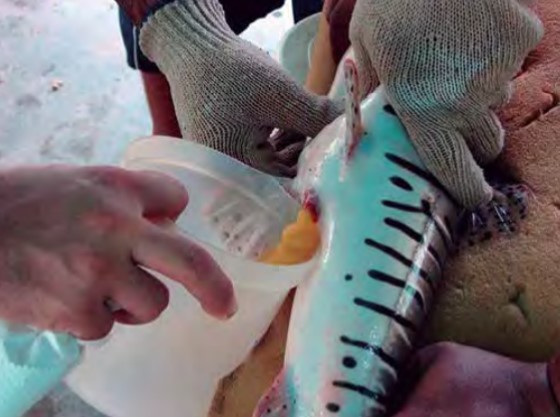Experiences on the induced reproduction of the rayao catfish in Delta Amacuro state, Venezuela
Abstract
The fish known under the common name of catfish belong to the families Ariidae, Pimelodidae and Siluridae, most of the species characterized by lacking protective dermal plates (scales), possessing barbs or chins, whose purpose is sensory and to find the food, and their natural habitat is the bottom of water bodies. In Venezuela, 378 species have been classified, being, so far, the most promising for cultivation under controlled conditions: Pseudoplatystoma fasciatum (rayao catfish), Leiarius marmoratus (yaque catfish) and Oxidoras siphonthesis (guitarilla or Caroní tuna; Taphorn et al. , 1997).
The growing interest that catfish have obtained in recent years, as promising fish species for cultivation, is due to the fact that they are freshwater fish with greater demand by a sector of the population with a tradition of consuming their meat, high nutritional value and price for sale in the markets (Guevara, 2001). However, the fish farming activity with these fish is only being developed experimentally, due to the few achievements made with the cultivation techniques necessary to develop it commercially, in this sense, the INIA Delta Amacuro aquaculture team considered carrying out a research work with rayao catfish species Pseudoplatystoma spp. to optimize the techniques of reproduction induced with different hormonal inducers.
References
Guevara, M. 2001. Cultivo de Bagres Autóctonos de Interés para la Piscicultura. Tucupita, estado Delta Amacuro, Venezuela, INIA (Instituto Nacional de Investigaciones Agrícolas, Estación Experimental Delta Amacuro). 21 p. mimeo, Subproyecto de Investigación.
Padilla, Palmira. P., F. Alcántara y RI, Orbe. 2001. Reproducción inducida de la doncella Pseudoplatystoma fasciatum y desarrollo embrionario – larval. Folia Amazónica Vol. 12 (1-2) – IIAP 141 p.
Pérez, J. L. 2007. Informe Anual de Gestión: evaluación reproductiva y levantamiento larval del bagre rayao (Pseudoplatystoma sp.) en el Delta Amacuro. Tucupita, estado Delta Amacuro, Venezuela, INIA (Instituto Nacional de Investigaciones Agrícolas, Estación Experimental Delta Amacuro). s. p. 33 p. mimeo, Subproyecto de Investigación (ID-DEL-05-00102).
Zohar, Y y C.C. Mylonas, 2001. Endocrine manipulations of spawning in cultured fish: from hormones to genes. In: Lee, C.; Donaldson, E. M. (Ed.), Reproductive Biotechnology in Finfish Aquaculture (Proceedings of a Workshop hosted by the Oceanic Institute). Amsterdam: Elsevier. 99 – 136 pp.


